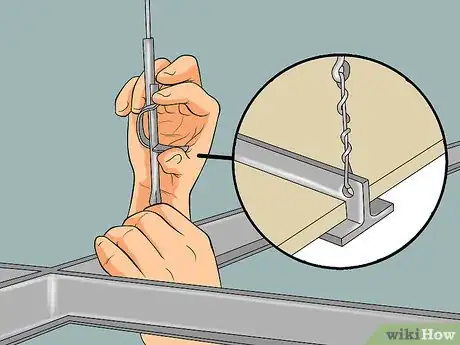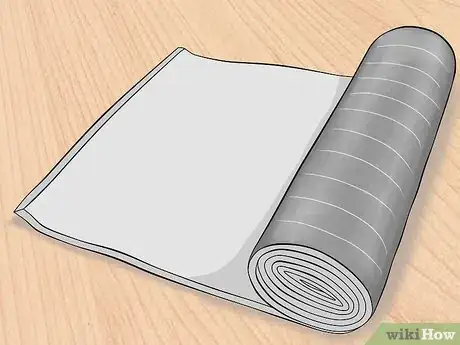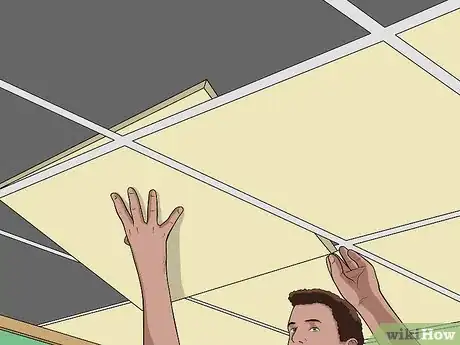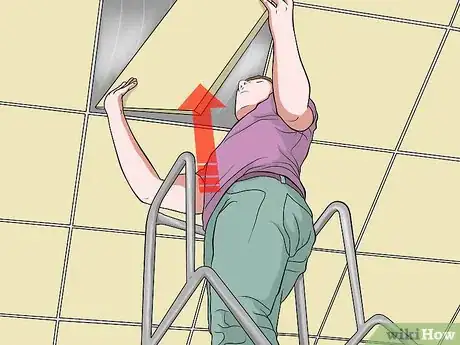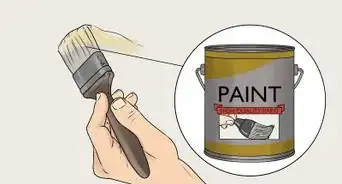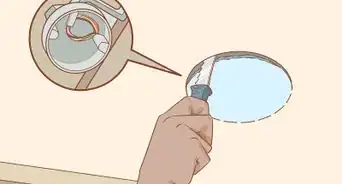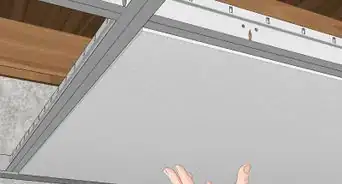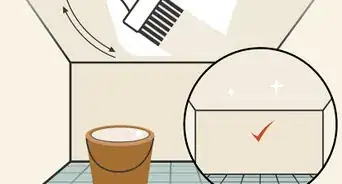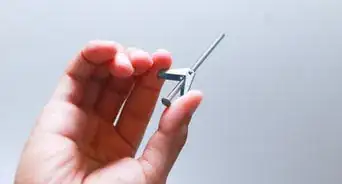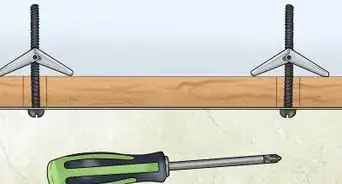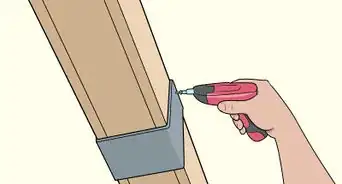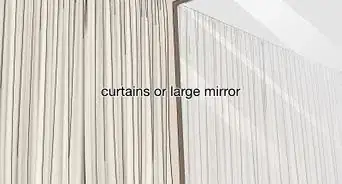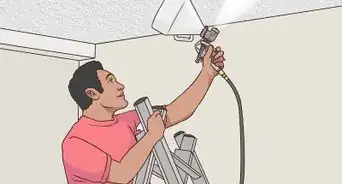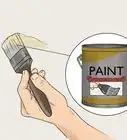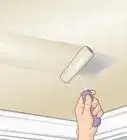wikiHow is a “wiki,” similar to Wikipedia, which means that many of our articles are co-written by multiple authors. To create this article, volunteer authors worked to edit and improve it over time.
This article has been viewed 120,989 times.
Learn more...
Suspended ceilings, also called "drop ceilings" or "dropped ceilings," are a popular choice for office spaces and residential basements. They are inexpensive, easy, and quick to install, and they require little maintenance. They also offer plenty of air space above the tiles for utility lines. The best way to insulate a drop ceiling is to install batt insulation between the ceiling joists before installing the hanging grid; this installation would proceed as any insulation installation. If you are seeking to add insulation to a suspended ceiling that is already in place, however, you will have to rest the batt insulation on top of the ceiling tiles.[1]
Steps
-
1Ensure that your ceiling tiles can support the weight of the insulation. Although batt insulation is fairly lightweight, it can put an undue amount of stress on flimsy drop ceiling tiles and break them.
- If you have fiberglass tiles, you'll need to replace them before proceeding. Fiberglass ceiling tiles cannot support the weight of insulation.
- If you have the more common wood-and-gypsum ceiling tiles, they will need to be at least 5/8 inch (15 mm) thick to be used safely with batt insulation.
-
2Install new hanger wires along each beam of the grid. Because you'll be adding additional weight to the ceiling grid, you will need to install additional hanger wires to support it.
- Aim to install an additional hanger wire between each existing pair of wires. This will double the total number of wires supporting each beam.
- Remember that the hanger wires should only be secured into the wood joists. If you ran your grid beams parallel to the ceiling joists this will not pose a challenge.[2]
Advertisement -
3Purchase batt insulation. Either paper-backed or foil-backed insulation will suffice; both types of this insulation are readily available at home improvement stores.
- Measure the distance of your grid from the joists to determine the depth of batting you should buy; most drop ceilings will accommodate up to 8" (20 cm) batts.[3]
- To determine the total amount of batt insulation you need to buy, simply calculate the area of the suspended ceiling (width multiplied by depth in a rectangular room).
-
4Slide the ceiling tiles out of place. Beginning on 1 end of the room, push all of the tiles in the first row up into the ceiling and slide them over. Do not take them completely down from the ceiling grid, as this makes them difficult to reinstall once the insulation is in place.
-
5Add the batt insulation. Begin working the strip of batt insulation above the ceiling grid and into the row you are working on, keeping the backing faced down. Sit the insulation flush against the hanger wires so that there won't be any air space between neighboring strips of batting.[4]
- You may find it helpful to temporarily remove the cross tees of the ceiling grid while you get the insulation into place.
-
6Slide the ceiling tiles back into place. After each section of batting is in place, reach underneath it and grab the ceiling tiles you moved aside. Gently pull them back into place so that the insulation rests on top. Repeat this process for each remaining row of tiles.
Community Q&A
-
QuestionWhat about simply blowing in insulation (either cellulose or fiberglass) over the drop ceiling tiles?
 Community AnswerNot a good idea either. Blown-in insulation begins to settle between 14-30 days after installation. When it settles, it will put all of its weight on the middle of the tiles it's installed over. Your chance of bending/warping tiles will be very high. On top of this, you will have a very high possibility of having fiberglass/cellulose particles enter the air of the space below the drop ceiling. To top it off, if you ever have to replace tiles or do work to any conduit or pipes above the ceiling, you will have a mountain of insulation come out whenever a tile is broken/removed.
Community AnswerNot a good idea either. Blown-in insulation begins to settle between 14-30 days after installation. When it settles, it will put all of its weight on the middle of the tiles it's installed over. Your chance of bending/warping tiles will be very high. On top of this, you will have a very high possibility of having fiberglass/cellulose particles enter the air of the space below the drop ceiling. To top it off, if you ever have to replace tiles or do work to any conduit or pipes above the ceiling, you will have a mountain of insulation come out whenever a tile is broken/removed. -
QuestionIs it ok to put in insulation without backing when insulating above ceiling tiles?
 Community AnswerNo, it is not a good idea as it is very possible that some of the fibers may fall into the living space. Without the backing, the possibility is higher.
Community AnswerNo, it is not a good idea as it is very possible that some of the fibers may fall into the living space. Without the backing, the possibility is higher. -
QuestionWhy is the insulating material facing down?
 Community AnswerFoil is a vapor barrier to keep moisture from condensing in the insulation. It should always face the living space.
Community AnswerFoil is a vapor barrier to keep moisture from condensing in the insulation. It should always face the living space.
Warnings
- Never handle fiberglass batting without wearing protective gloves, a dust mask, and safety glasses. Stray fibers from the insulation can be a major irritant to skin, eyes, and mucus membranes.⧼thumbs_response⧽
- Do not attempt to spray foam insulation above the suspended ceiling tiles. This will make it nearly impossible to remove any of the tiles in the future.⧼thumbs_response⧽
Things You'll Need
- Hanger wires
- Electric drill
- Wire cutters
- Tape measure
- Fiberglass batt insulation
- Scissors or knife
- Chair or stepladder
- Gloves
- Dust mask
- Safety glasses
References
- ↑ https://www.nrcan.gc.ca/energy-efficiency/energy-efficiency-homes/make-your-home-more-energy-efficient/keeping-heat/keeping-heat-chapter-5-roofs-and-attics/15637#a5-4
- ↑ http://www.ifinishedmybasement.com/finish-work/how-to-install-a-drop-ceiling/
- ↑ https://www.bunnings.com.au/diy-advice/home-improvement/heating-and-cooling/how-to-insulate-a-ceiling
- ↑ https://www.bunnings.com.au/diy-advice/home-improvement/heating-and-cooling/how-to-insulate-a-ceiling
- http://www.thisoldhouse.com/toh/asktoh/question/0,,20242660,00.html

